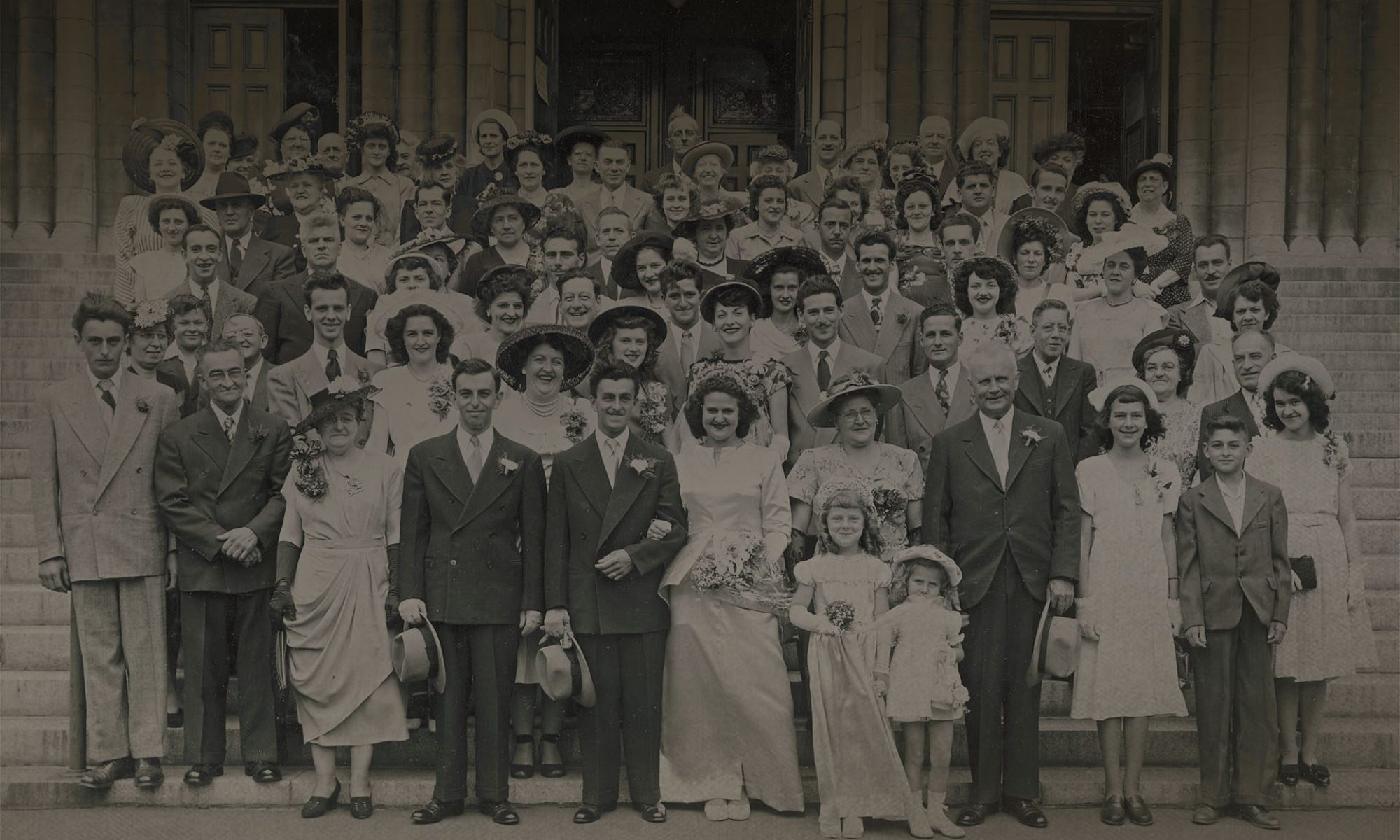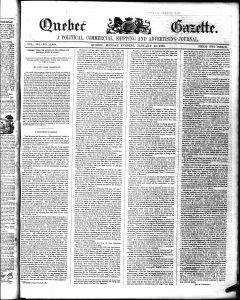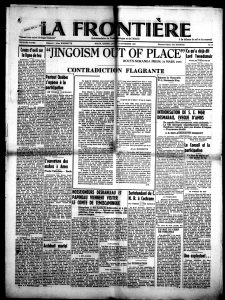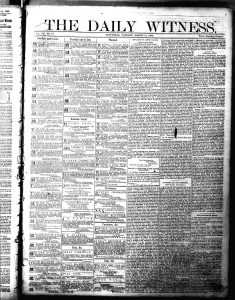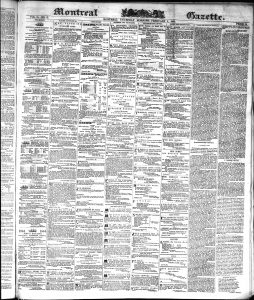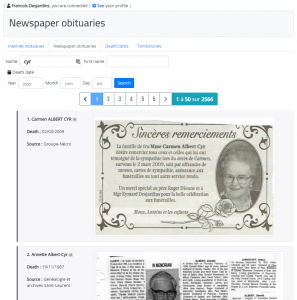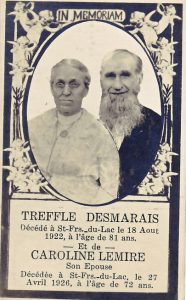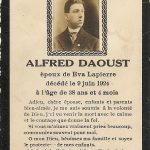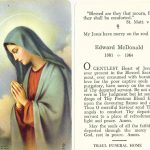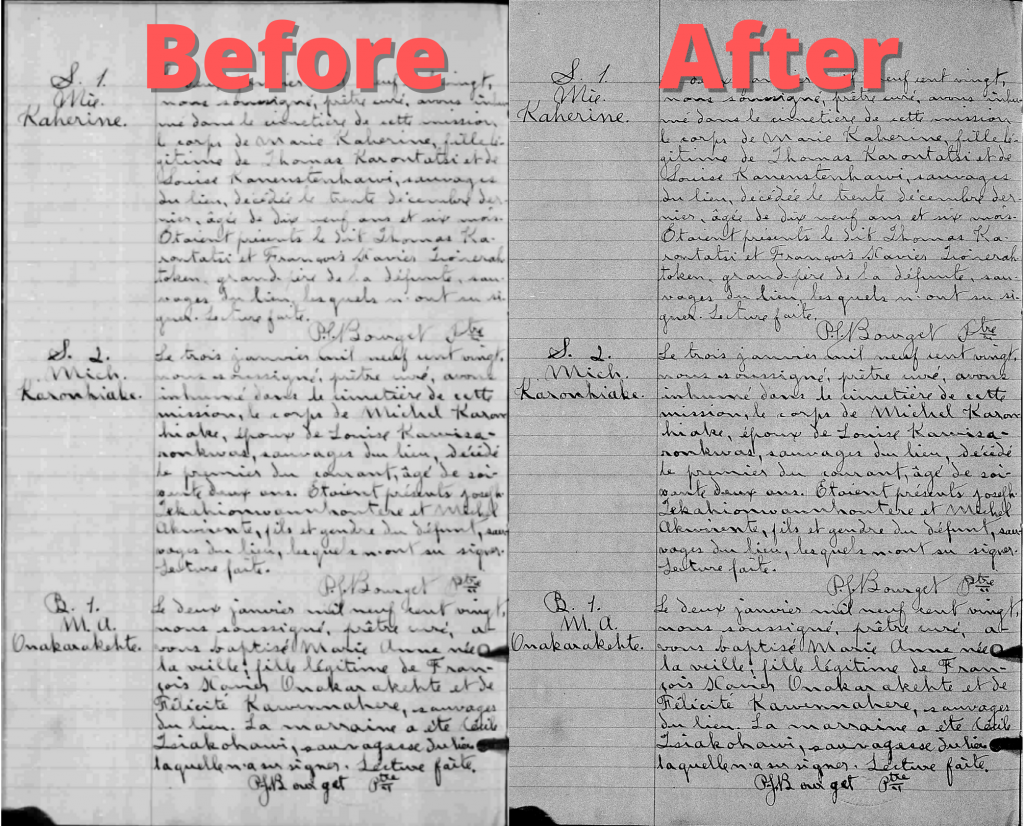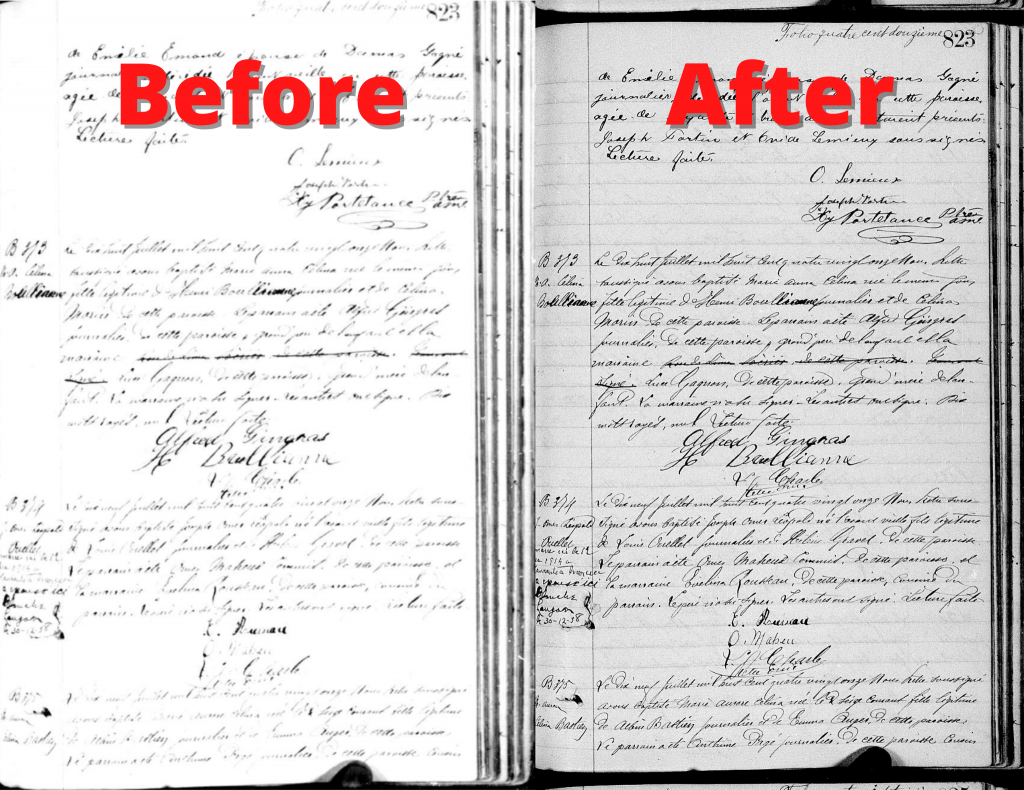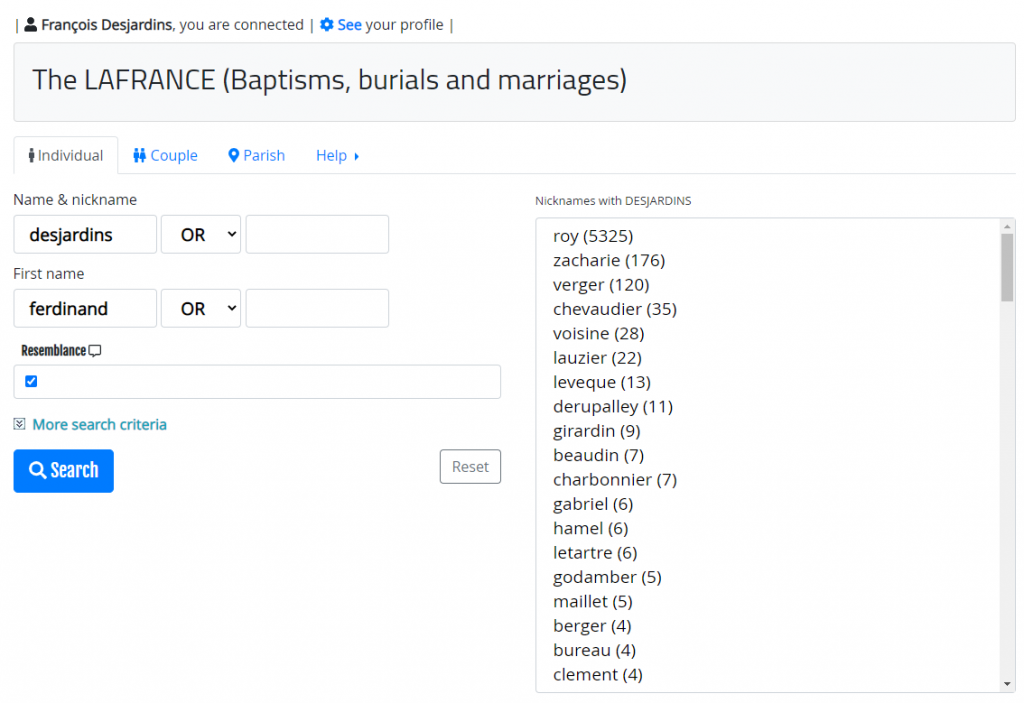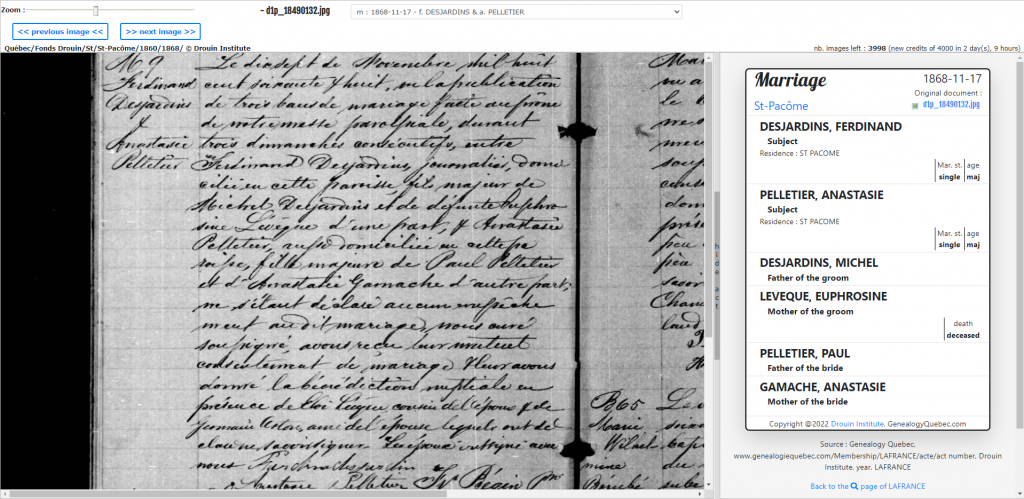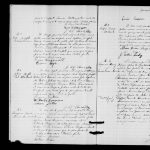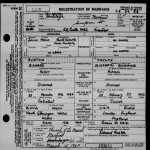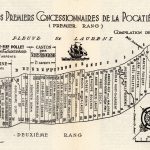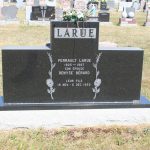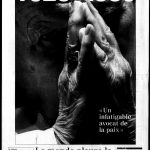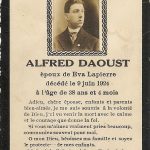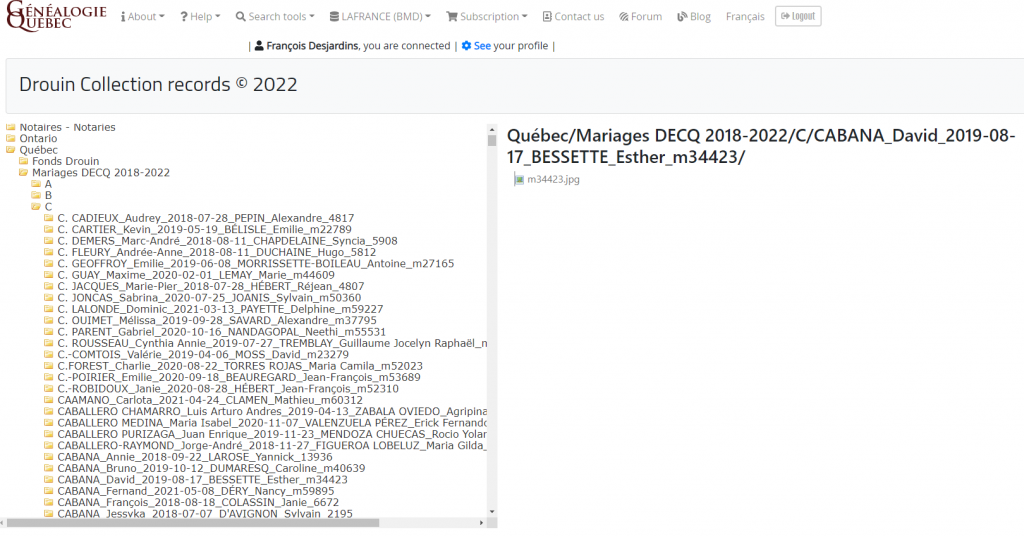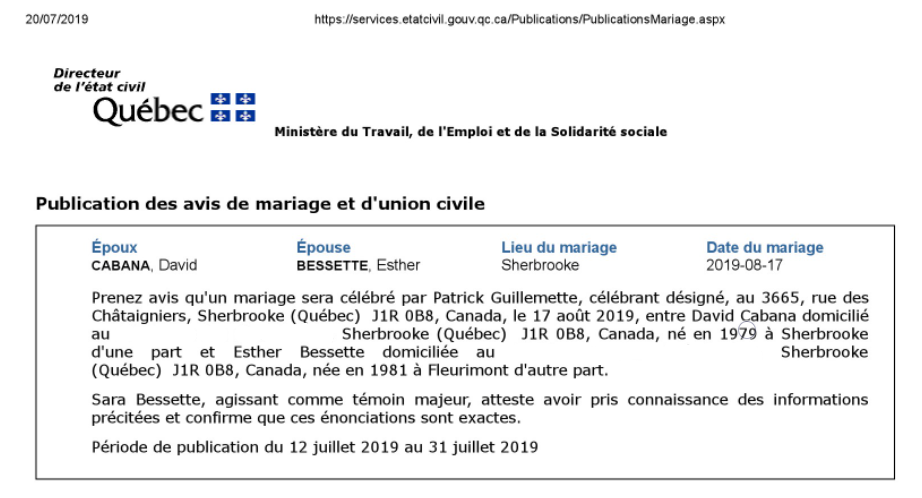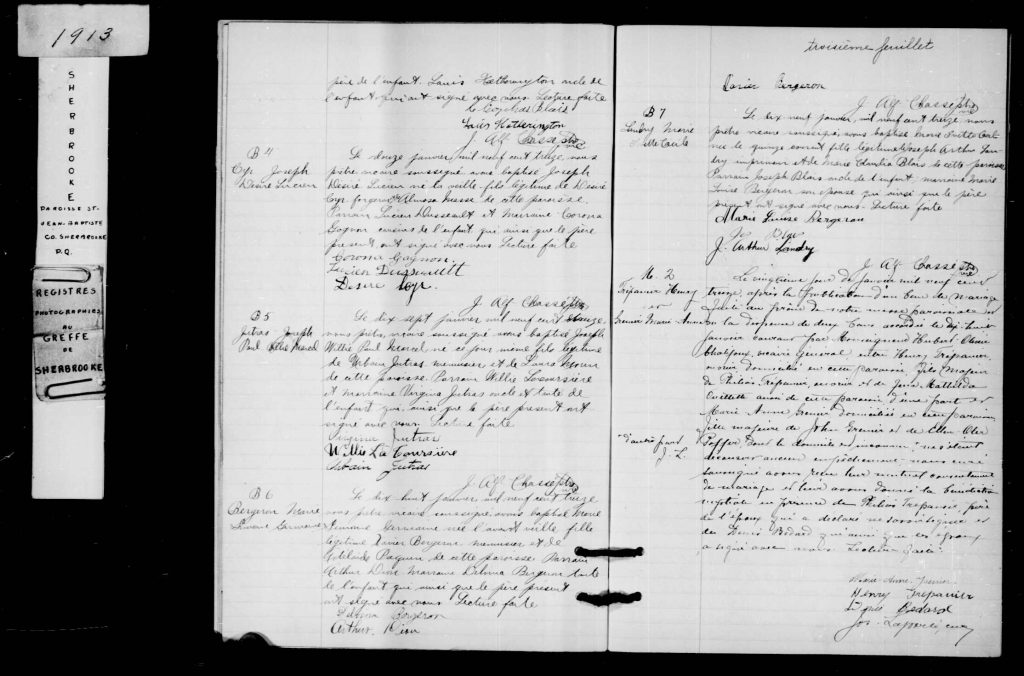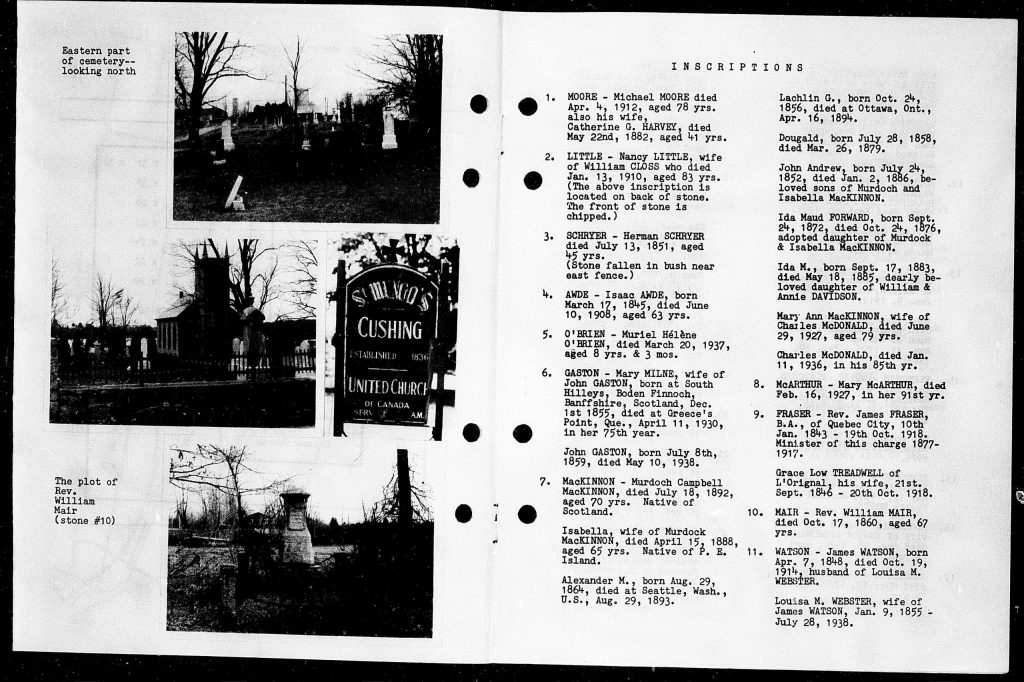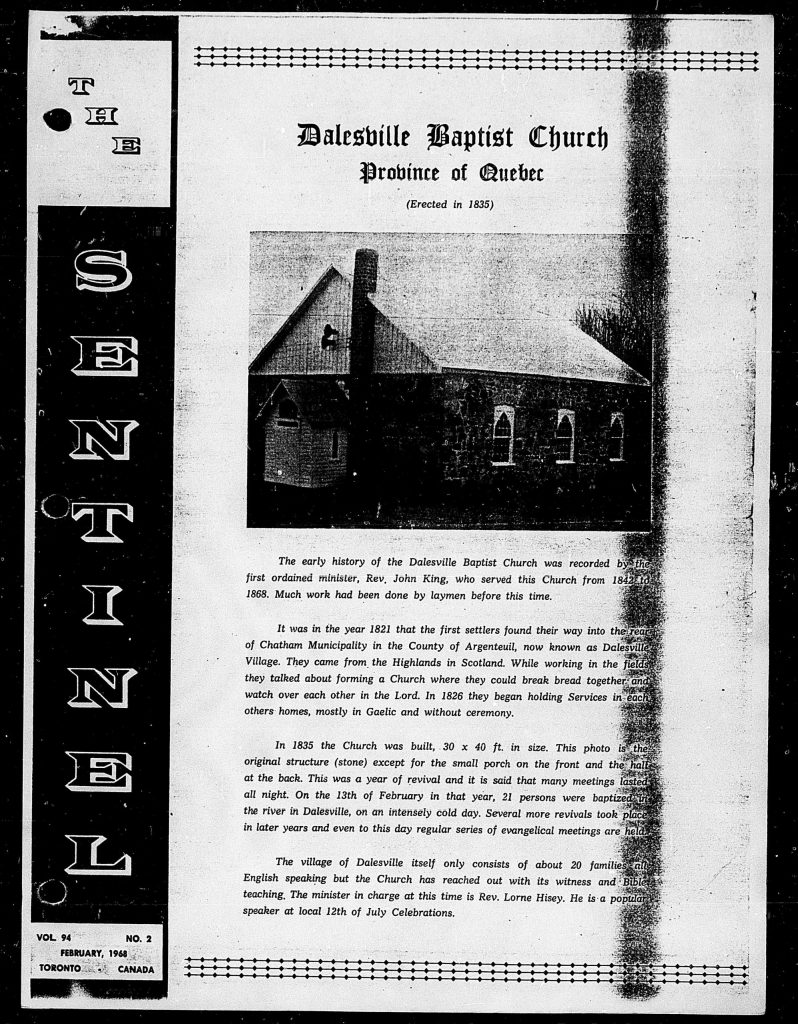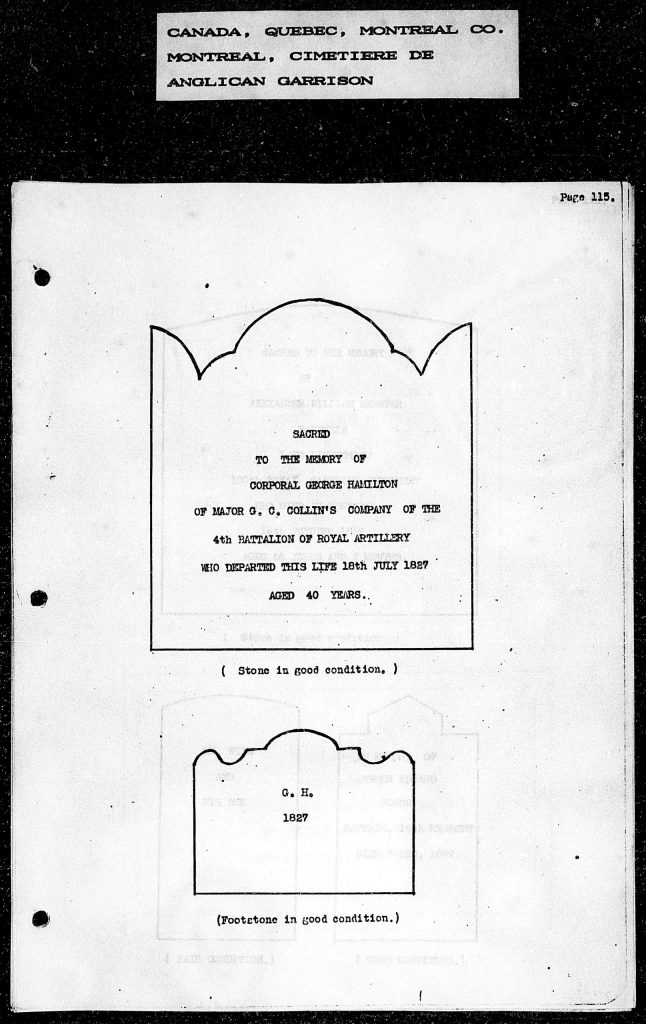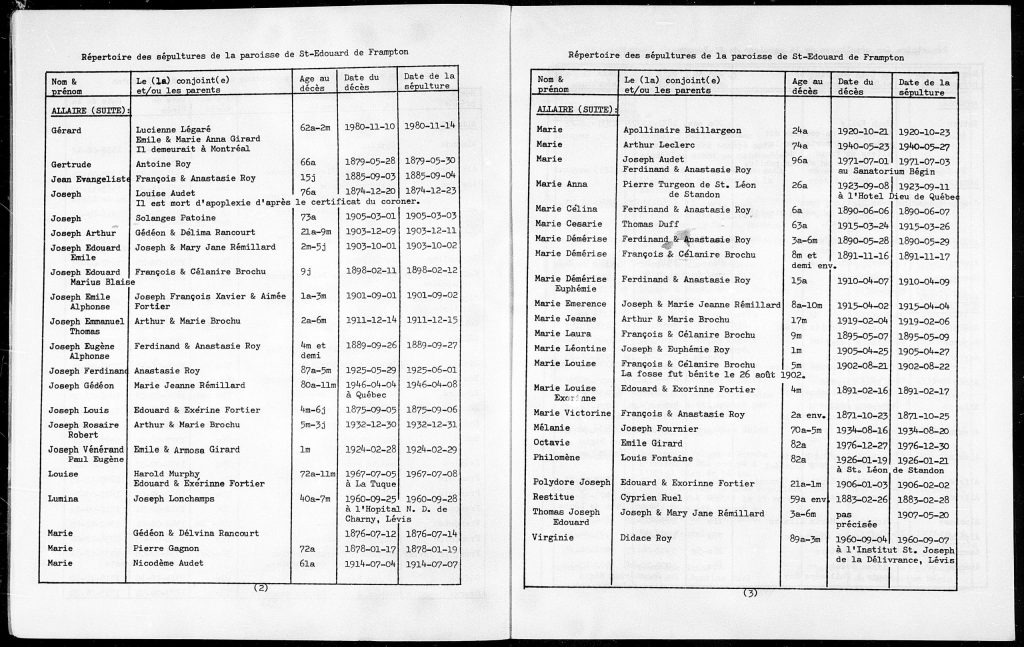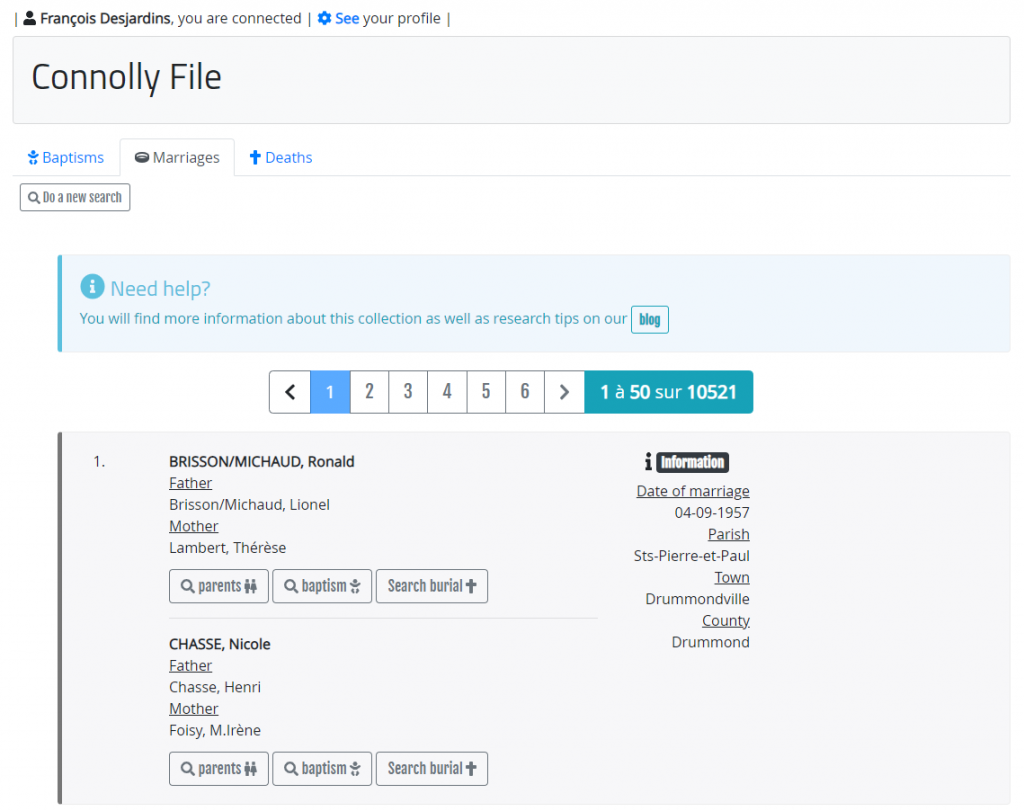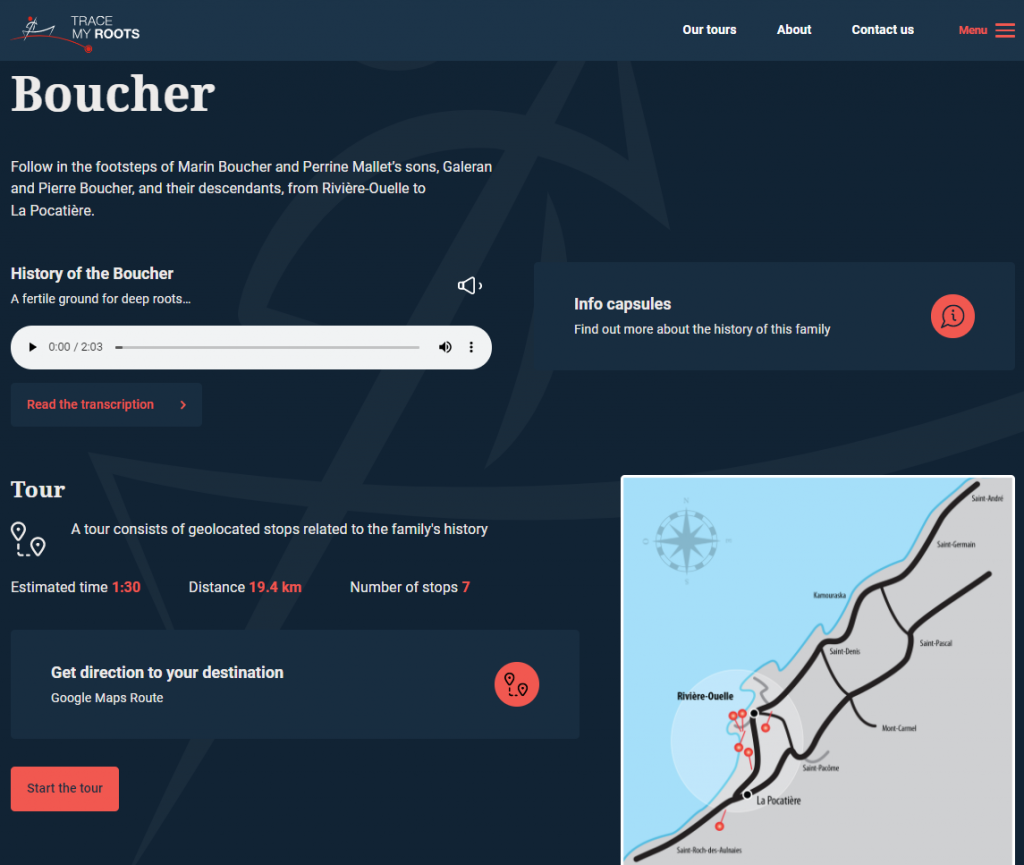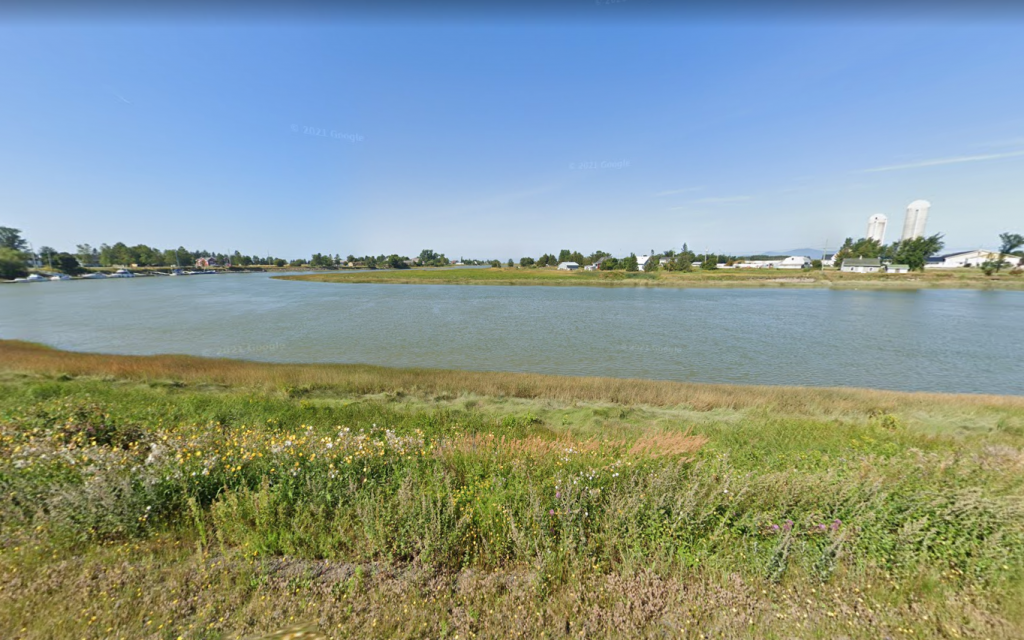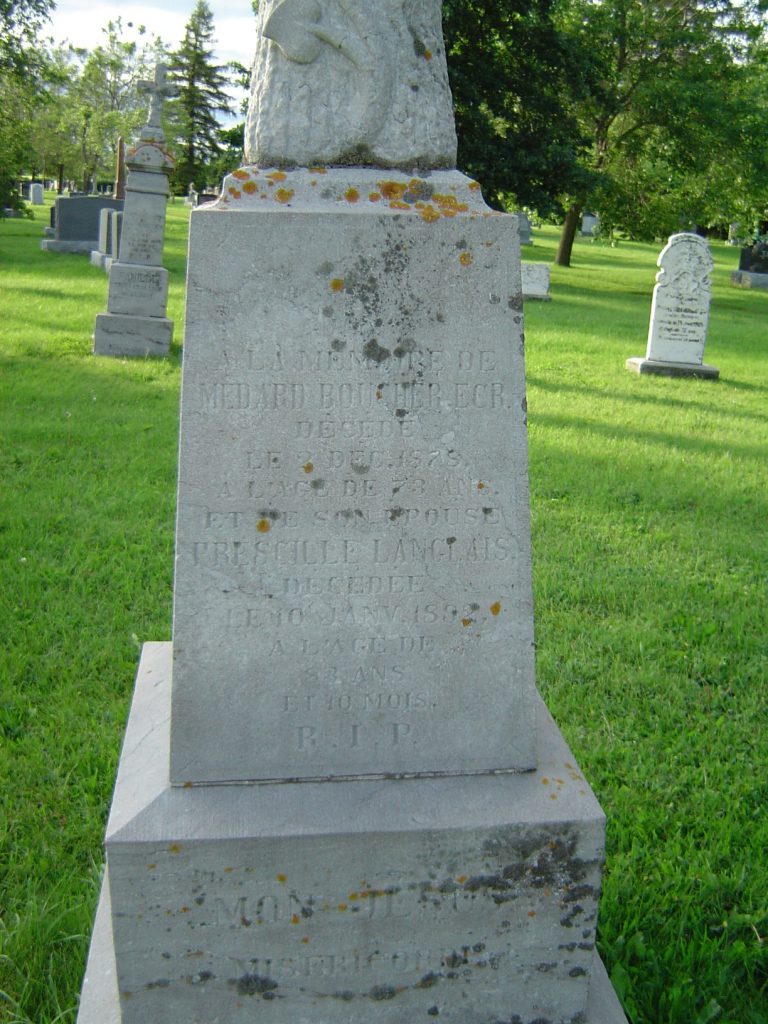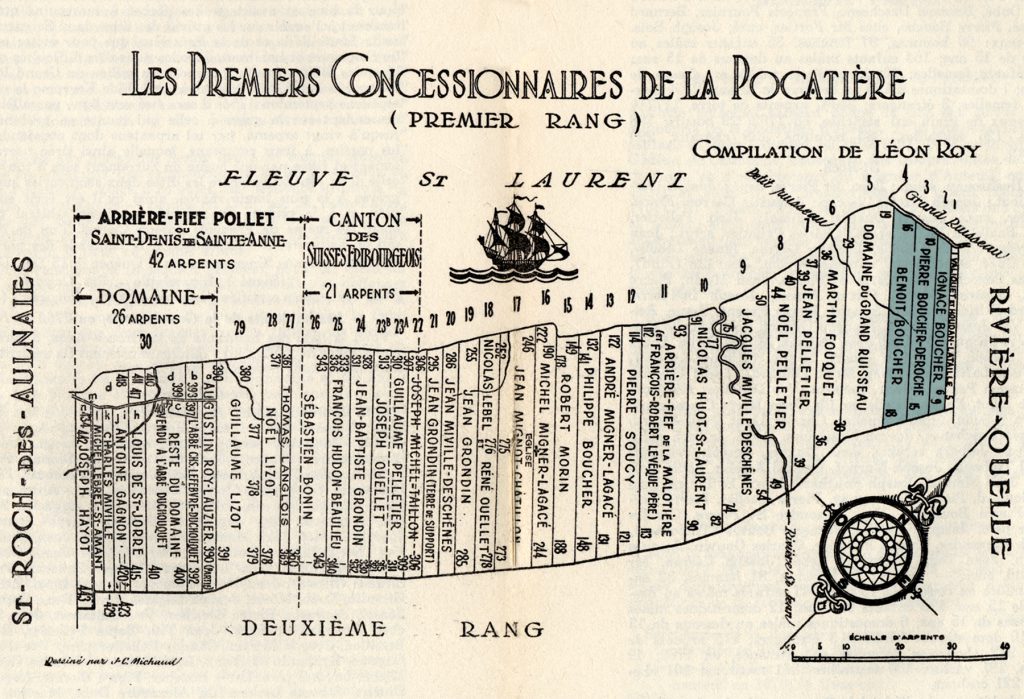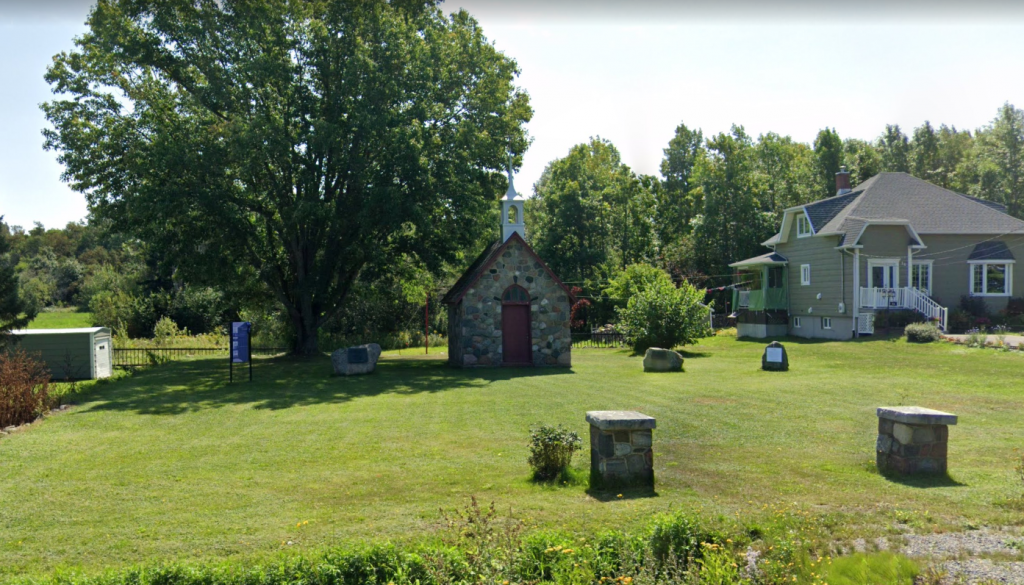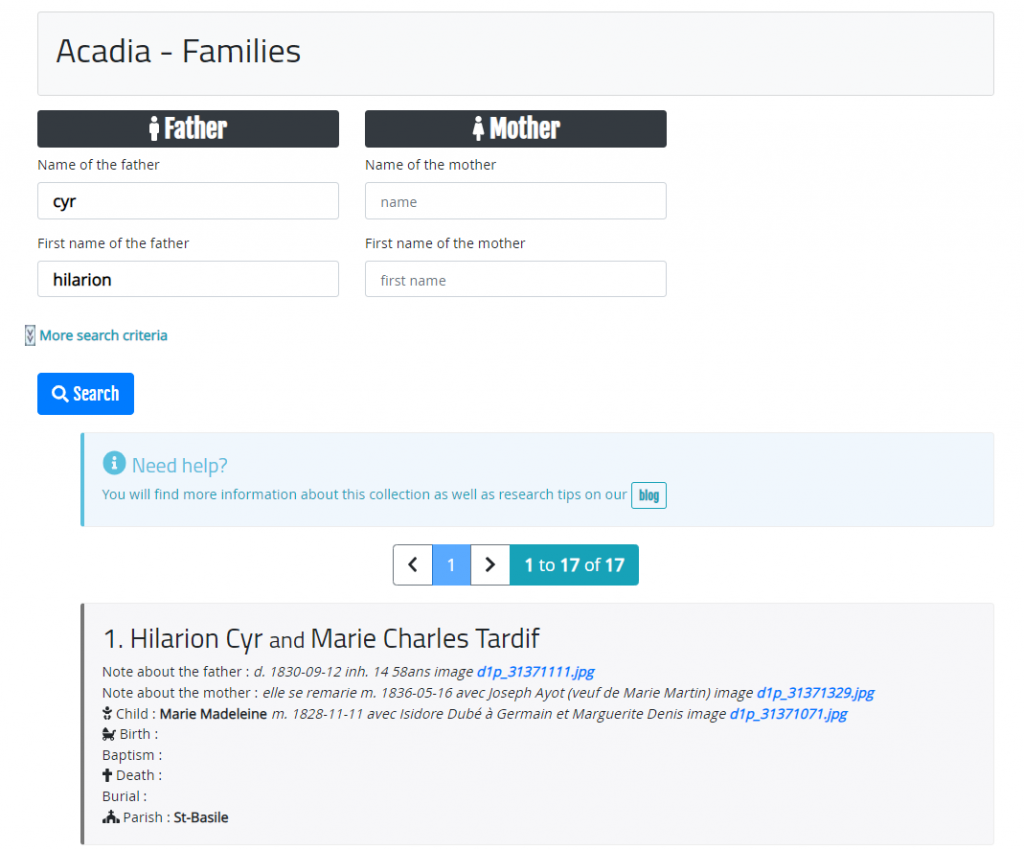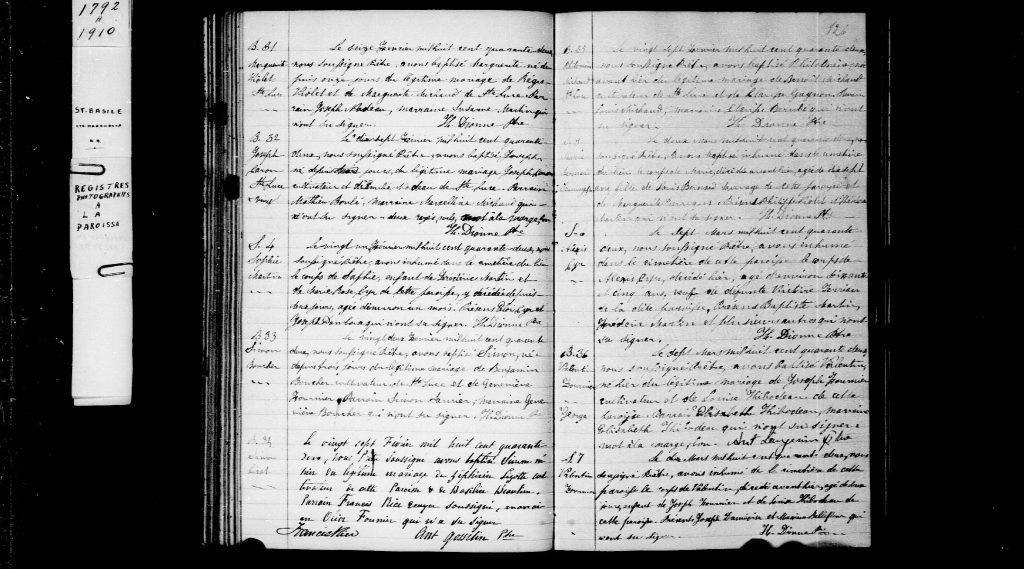| Argenteuil, Cimetière de St. Andrew’s Protestant | Arundel, Cimetière de Rivière Rouge Cemetery |
| Atholville, NB, Cemetery of Old Athol House | Atlas of the City of Montreal 1890 |
| Atlas of the City of Montreal 1912-1914 | Barnston, Cimetière de Pleasant Hill |
| Bristol, Cimetière de Norway Bay Anglican Cemetery | Brome West, Cimetière de Pettes |
| Brome, Cimetière de Congregational Church Old | Broughton, Cimetière de Broughton Cemetery |
| Buckingham, Cimetière de St. John Glen Almond | Buckingham, Cimetière de St. Stephen Anglican |
| Calumet, Cimetière d’Edendale Cemetery | Cemeteries of Southwestern Quebec (68 lieux, historiques et cimetières) |
| Chatham, Cimetière de Dalesville Baptist Church | Chatham, Cimetière de Ogdensburg Cemetery |
| Chatham, Cimetière de St. Mungo’s United Church | Clarenceville, St-George’s Anglican Cemetery |
| Cleveland, Cimetière de St. Anne Cemetery | Comté d’Argenteuil, Cimetière de Dunany |
| Dunham, Cimetière de All Saints Anglican | Dunham, Cimetière de Bates |
| Dunham, Cimetière de Scottsmore | Farnham, Cimetière de Jewell Family |
| Forillon National Park, Cimetière de Cap-aux-Os Methodist United | Forillon National Park, Cimetière de Indian Cove Methodist |
| Forillon National Park, Cimetière de Peninsula Anglican | Forillon National Park, Cimetière de St-George’s Cove, Little Anglican |
| Forillon National Park, Cimetière de St-George’s Cove, Methodist | Forillon National Park, Cimetière de St-George’s Cove, Roman Catholic |
| Frampton, Inventaire des sépultures de la paroisse St-Édouard | Frampton, Springbrook Anglican Cemetery |
| Franklin, Cimetière de Abbott Farm | Gaspé Bay – Cimetière de O’Hara Graveyard |
| Gaspé Bay – Cimetière de Rosebridge Methodist United | Gaspé Bay – Cimetière de Wakeham, Old Cemetery |
| Glen Sutton Cemetery Brock Memorial Park | Godmanchester, Cimetière de Smellie Graveyard |
| Godmanchester, Cimetière de Zion Church Cemetery | Gore, Cimetière de St. Aidan’s Anglican |
| Gore, Cimetière de St. John’s Anglican. | Gore, Cimetière de St. Paul’s Anglican |
| Grenville, Cimetière de la Famille Beauchamp | Grenville, Cimetière de McNeil’s Cemetery |
| Grenville, Cimetière de Mille Isles Anglican | Grenville, Cimetière de Mille Isles Methodist |
| Grenville, Cimetière de Mille Isles Presbyterian | Grenville, Cimetière de St. Mary’s Anglican Church. |
| Grenville, Cimetière de St. Matthew’s Anglican | Grenville, Cimetière Pointe au Chene |
| Harrington, Cimetière de Harrington Glen Cemetery | Harrington, Cimetière de Lost River |
| Harrington, Cimetière de Rivington | Harrington, Cimetière de Shaw’s Cemetery |
| Havelock, Cimetière de Wesley Knox United | Hemmingford, Cimetière de Union Church Cemetery |
| Hereford Village, Cimetière de All Saints Anglican | Hereford, Cimetière de Chemin des Côtes |
| Hereford, Cimetière de Hall Stream, Old | Hereford, Cimetière de Herbert Lawton Memorial |
| Hinchinbrooke, Cimetière de Rockburn Hillside | History of Chateauguay Valley volume 1 (11 lieux) |
| History of Chateauguay Valley volume 2 (17 lieux) | History of Chateauguay Valley volume 3 (12 lieux) |
| Inverness, Cimetière de Boutelle Cemetery | Inverness, Cimetière de Scotch Settlement |
| Kingsey, Cimetière de Maplewood Cemetery | Kingsey, cimetière de Trenholm United Church Cemetery |
| Kinnear’s Mills, Cimetière de Ewert Hill Private Cemetery | Lachine, Cimetière de McNaughton Cemetery |
| Lake Joseph, Cimetière de First Burying Place | Lochaber West, Cimetière de Lochaber Bay Cemetery |
| Lochaber, Cimetière de Macgilivray Cemetery | Lysander Falls, Cimetière de Lysander Falls Cemetery |
| Matane, Cimetière de Metis Beach United Church | Melbourne, Cimetière de St. Andrew’s Cemetery |
| Montréal, Cimetière de Anglican Garrison | Montréal, Cimetière de Côte-des-Neiges Cemetery |
| Montréal, Cimetière de Old English Burial Ground | Morin Heights, Cimetière de Hillside Cemetery |
| Morin Heights, Trinity Church Cemetery | North Pinnacle, Cimetière de Deming |
| Noyan, Old 3rd Concession Cemetery | Québec (Mount Hermon Cemetery), ordre alphabétique et par année |
| Québec, Cimetière de St. Matthew’s Anglican | Shipton, Cimetière de Castlebar Cemetery |
| South of St-Georges-de-Beauce, Marlow in Armstrong Presbyterian | Stanbridge, Cimetière de Ploss Burying Ground |
| Stanbridge, Cimetière de Stanbridge Ridge | Stanbridge, Cimetière de Stanton |
| St-André-d’Argenteuil, Cimetière de Christ Church Anglican | St-Armand, Cimetière Baptist Cemetery |
| St-Armand, Cimetière de Barnes | St-Armand, Cimetière de Hawley Family |
| St-Armand, Cimetière de Johnson Family | St-Armand, Cimetière Protestant |
| St-Eustache, cimetière de Grand Lafresniere Presbyterian Church | St-Joseph-de-Beauce, BMS Anglican Congregation |
| St-Joseph-de-Beauce, BMS Presbyterian Congregation | St-Malachie, Dorchester Cimetière Cemetery 1857-1986 |
| St-Sylvestre, Cimetière de King Cemetery | St-Urbain Catholic Cemetery |
| Sutton, Cimetière de Fairmount | Sutton, Cimetière de Morse Family |
| Sutton, Cimetière de Pettes, Aseltine | Sutton, Cimetière de Westover |
| Sutton, Cimetières de Abercorn Old and New | Township of Leeds, Ferguson Private Cemetery |

